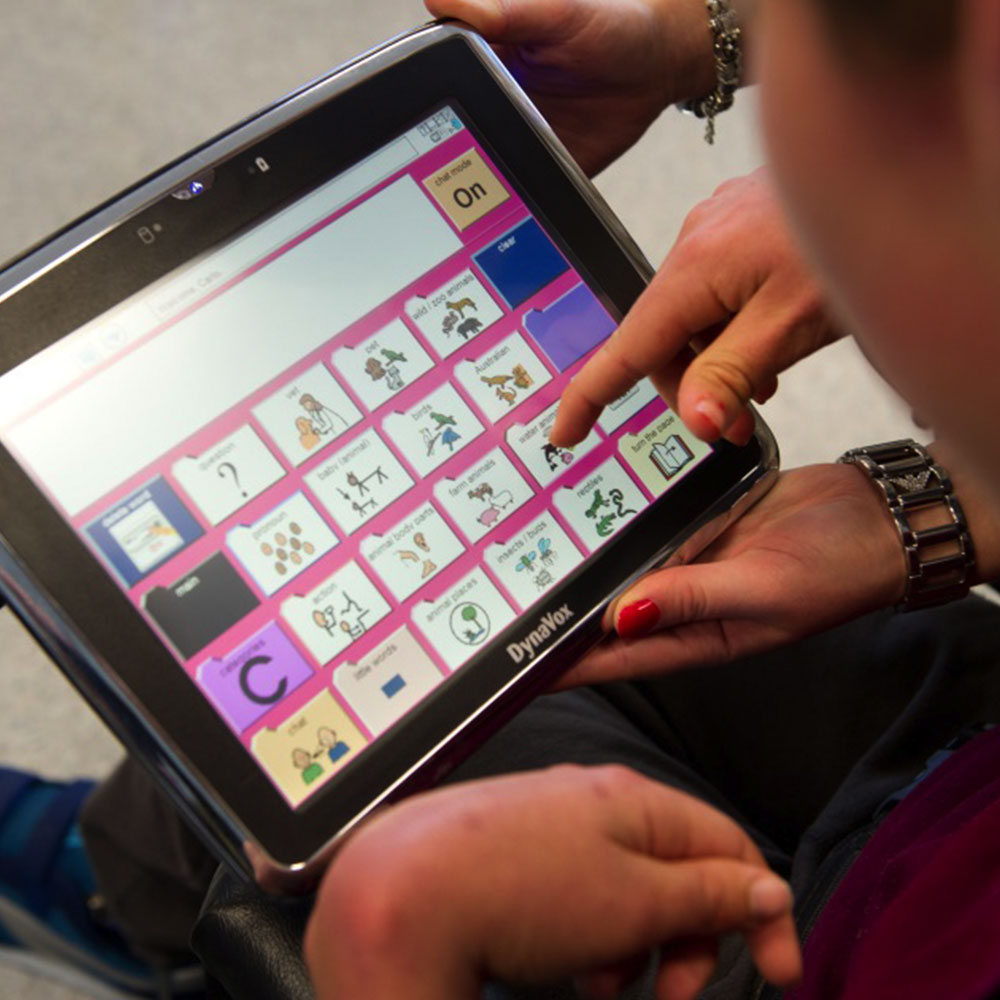What is ‘augmentative and alternative communication?’
Augmentative and alternative communication is a type of communication that combines gestures, eye pointing, vocalisations and pointing to symbols as communication for people with limited speech abilities.
Augment means to add to or to enhance. For example, we can augment speech by using gestures, eye pointing and body language.
Alternative means a choice or a substitute. We can use alternative communication to speech by pointing to symbols, signing or by spelling.
Communication means to send and receive messages with at least one other person.
This means augmentative and alternative communication (often shorted to AAC) is the term for all communication that is not speech, but other types used to enhance or to replace speech.
How will AAC support me or my child?
Augmentative and alternative communication systems can assist people who cannot speak to develop language skills and increase participation and inclusion in daily activities. It’s an important tool that can give people more communication control and decrease frustration.
Therapists may suggest an augmentative and alternative communication system if speech is slow to develop or non-existent, or as a back-up if speech ability is very limited or difficult to understand. An AAC system may be either a short or a long-term solution to communication difficulties being experienced.
